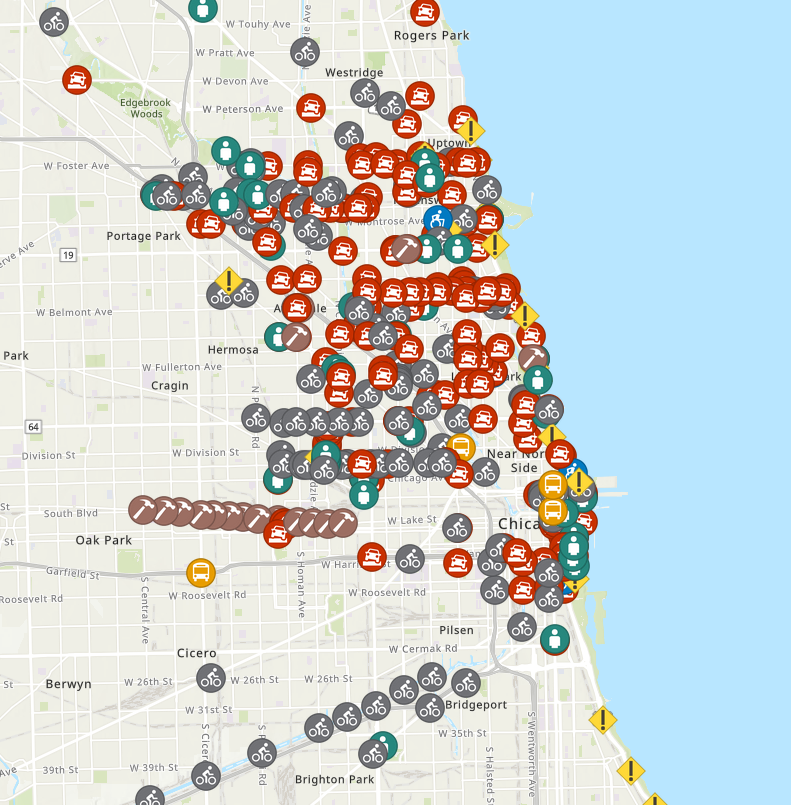Kudos to the Illinois Department of Transportation (IDOT) for recent initiatives that take a step toward making our streets safer for people walking and biking.
In an effort to identify locations that may be unsafe for people walking and biking, the agency has created an interactive map that allows people to flag dangerous spots and add notes.
We’re hoping that this interactive map, called the Vulnerable Road User Safety Assessment, will help IDOT make informed decisions about how to allocate resources to make our streets safer.
The information submitted is particularly valuable during a time when crashes and fatalities that involve people walking and biking has been growing.
To learn more about the initiative, you can watch the kick-off webinar recently held by IDOT. If you have any questions regarding the map, you can contact IDOT at [email protected].
SAFE INFRASTRUCTURE NOW EASIER TO INSTALL
This new mapping tool comes on the heels of another positive development with our state transportation agency.
Earlier this year, IDOT and the Chicago Department of Transportation (with help from some on Chicago City Council) came to an agreement that will streamline and accelerate the process of delivering proven safety measures on local roads and state routes within the City of Chicago.
This Memorandum of Understanding (MOU) enables infrastructure and street designs for safer walking and biking to get built more quickly — without the need for the typical lengthy approval process.
The MOU applies to approximately 400 miles of streets that are under state jurisdiction in Chicago, which include some of the most heavily traveled streets in the city.
We’re hoping this improved collaboration between CDOT and IDOT ultimately will help make many of Chicago’s streets safer.
A NEW APPROACH FOR IDOT?
These are significant steps for IDOT, an agency that historically has been more like a department of highways than a department of transportation.
It’s no secret that state routes throughout the region are often the most dangerous roads for biking and walking.
We’re hoping the agency continues on this pathway toward a greater commitment to cleaner, healthier transportation.

